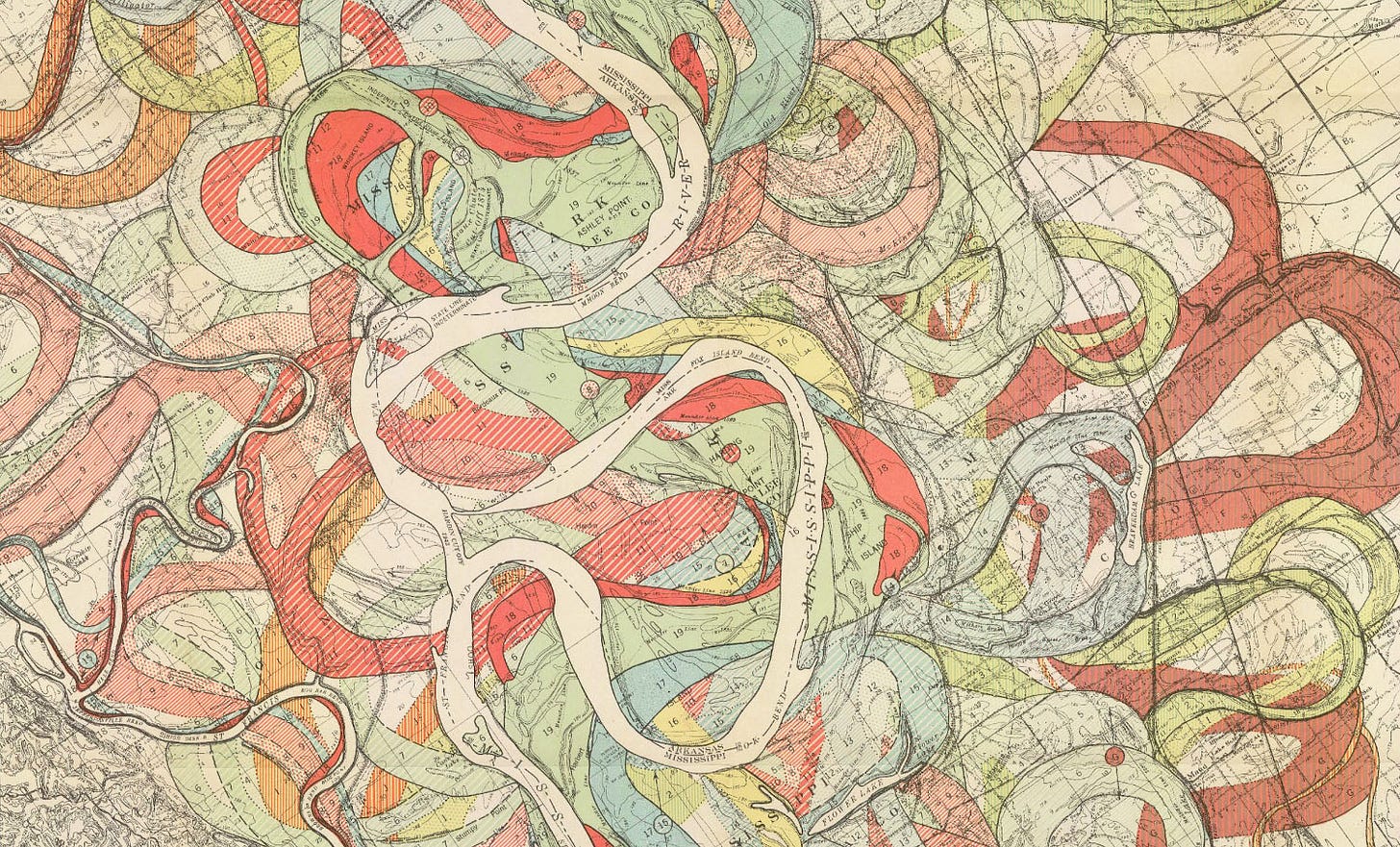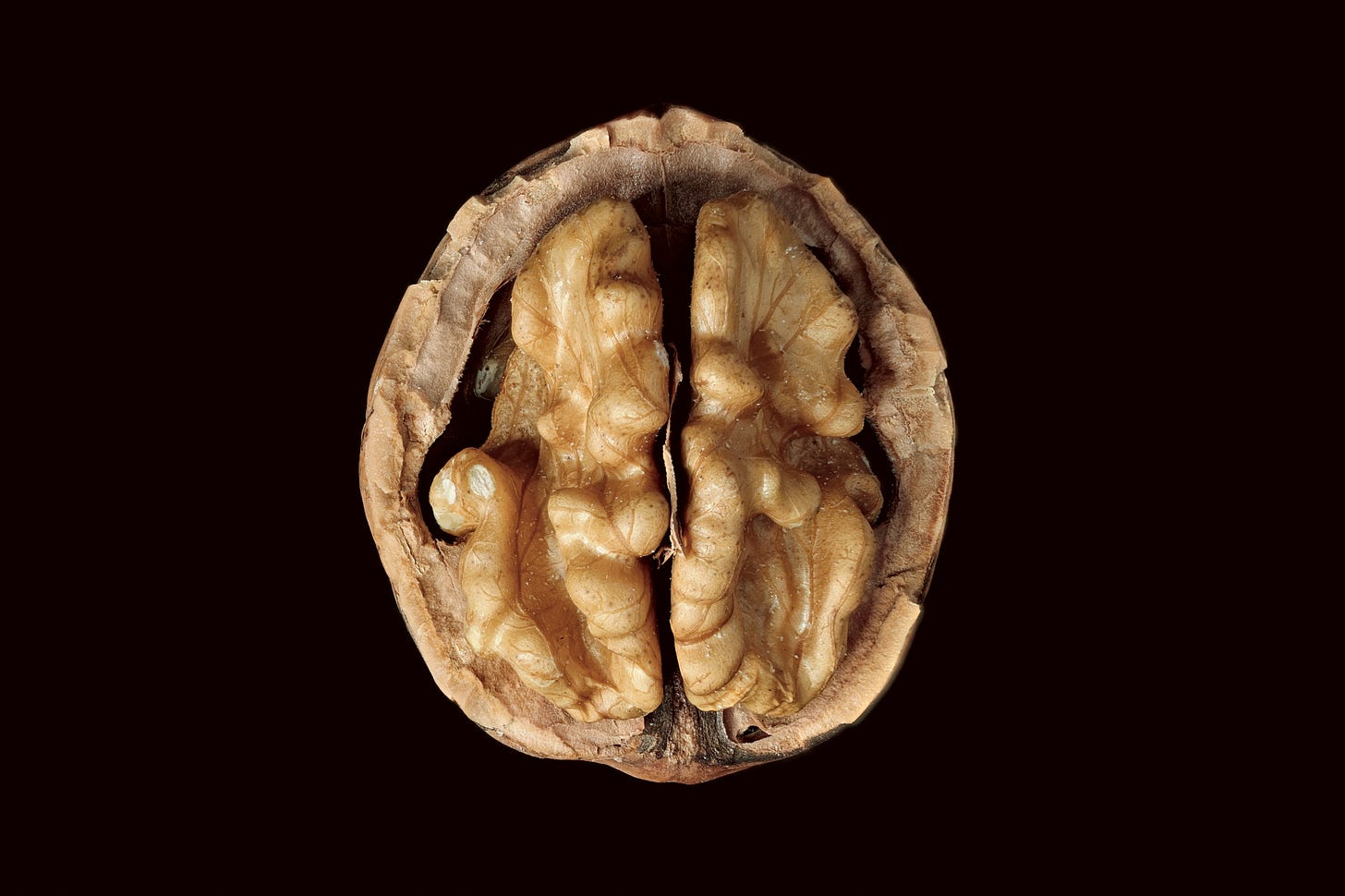The Signature in the Scribble
The Slow-looping River of Ink + Recipe
“…this process of making meanders seems to be a self-intensifying process a sort of chain reaction in which greater curvature results in more erosion of the bank, which results in greater curvature…And so it is”
Elizabeth A. Wood Science from your Airplane Window
Tangled Leashes
The girlfriend of my dog is named Ruby her owner is named Don and Don happens to be a sometimes collaborator and master bookbinder and so while our dogs were playing I got to consult with him on my new project. I told Don I needed some very special string. My dog is a huge husky mix who is known to the neighbourhood, in the reversed naming style of a mobster, as Babydog. Ruby is smaller but can, in a hot minute, take Babydog down in a pile of fur, slobber and tangled leashes that seems to form the basis of their long friendship. Don pointed me to the bees-waxed heavy gauged linen thread of Japanese bookbinders for my project. I am working on a method to lash bamboo and found-fibres together to make a marking tool that dipped into the right kind of ink and dragged across the right kind of paper creates a rough but scraggly line that feels like what I have been looking for my whole life. A sort of signature line.

Snaky lines
The thread got me thinking about the line and Paul Klee’s line about taking a line for a walk which got me thinking about sinuousness the inward curving cave of the sinus and the way a snake makes an infographic trail of the the pulses of its muscles as registered on the erasable surface of hot glassy sand. And from there to Brice Marden’s snakes in box paintings, the islamic calligraphic tradition that is both written recitation and felt organic decoration and the map as extension of the mind in subway plans. Others have been drawn to the snaky line that slips between patterns and art, map and doodle, information and feeling. Ani Albers, and Cy Twombly and Donling Wang. The way a scribbly thread on its looping path describes something of the self.
Walnuts and Brains
And then later that same day in Rūta’s kitchen talking business my baby finger still reverberating with the slowtime Himalyan black clover-goo I was trying for the first time, her familiar, Myrrh, a butterscotch-coloured cat with a corona of soft-shocked fur watching the window for dive-bombing geese. We imagined the iron curve of the trans Siberian railroad considered how we might capture the scent of the green hulls of walnuts and of course she had a lab fridge in a closet I’d never seen before full of test-samples bottles of herbal essences from a botanical innovator now in exile from the city. And the conversation looped back to the black walnut as it often does and she mentioned The Doctrine of Signatures that medieval medical-magical idea that a plant shape is a key to its healing power hence walnuts and Brains. Walnuts are definitely not bad for you brain and they do have some of the back and forth folding and wrinklings that solve the problem of more surface area inside a contained shell that the brain has also solved and at the same time they are split into two hemispheres. I wouldn’t recommend the indiscriminate consumption of leaves and mushrooms that happen to be in the shape of some body part that is giving you trouble but I do sometimes recommend the cultivation of unlikely resonances. And like a walnut or a brain I do think that it’s though the looping back over old territory that some of the best discoveries are made. And so lets loop back again.

A timeless human pattern
The word meander not only describes the pathway an old river takes but was proverbially named by the Greeks after the Maeander River famous for its twisting route to the Aegean through present day Turkey where it is now known as The Büyük Menderes River. The stylized version of the repeated back and forth looping shape that decorates the edges of Greek pottery also took the name meander. The shape reoccurs in Roman mosaics, Mayan stonework, and Parisian balconies. The oldest example comes from the banks of another river, The Desna in northern Ukraine where the pattern was found scratched into a mammoth bone bracelet discovered among even older marked bones with a simpler but purposeful repeating pattern that anthropologists think may have been the beginnings of moon cycle calendars which in their slow loop around the bone and must have been the first repeated pattern we noticed. A cycle inside as deep as a heartbeat.

River Bend
I love the way rivers show time through showing what they have been up to along their way they become more meandering as they grow older. What was a path of least resistance becomes a path slowed and articulated around resistance and erosion. So a slight swerve around some obstacle in the landscape becomes a curve that becomes a bend which becomes a meander and then finally the meander becomes so extreme that it loops back on itself is abandoned by the main channel and fattening in isolation becomes an oxbow lake with its parent-river flowing along beside it.

Knots and strings
The forces that shape the squigglings of a river are, in their ordered disorder, of continuing interest to mathematicians who love a windy path from A to B. Einstein wrote about the fluid dynamics of river bank erosion which he relates to the earth’s rotation in space and a kind of famous paradox involving tealeaves in a cup which he solved in a 1926. Einstein’s theories of the shapes of riverbanks seem to be somewhat overshadowed by practical geologists concerned with the specifics of particular rivers but meanwhile theoretical math and physics seems to have taken squiggles to a whole new level. Some of the most beautiful theoretical spaghetti forms I could find come from Edward Witten who in 1990 became the first physicist to win the Fields Medal ( sort of the Nobel prize for math). Witten is using the mathematics of knots to find some order in the loops and zigzags of the probable paths of quantum particles. Along with his pioneering work applying math to physics and physics to math, and working in 11 dimensions, Witten also set in motion something called the second superstring revolution which might bring us one step closer to explaining everything (called the theory for the unification of all known physical interactions).

Crossing Over
Witten makes me notice not just the looping back on itself but also the place where two lines cross which sends me back to the project I am supposed to be working on. A secret project for an international company…
Keep reading with a 7-day free trial
Subscribe to The Colour | Newsletter | Lab | Community to keep reading this post and get 7 days of free access to the full post archives.





